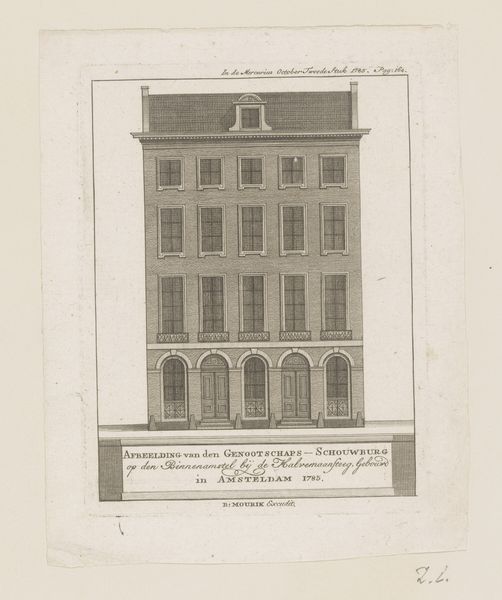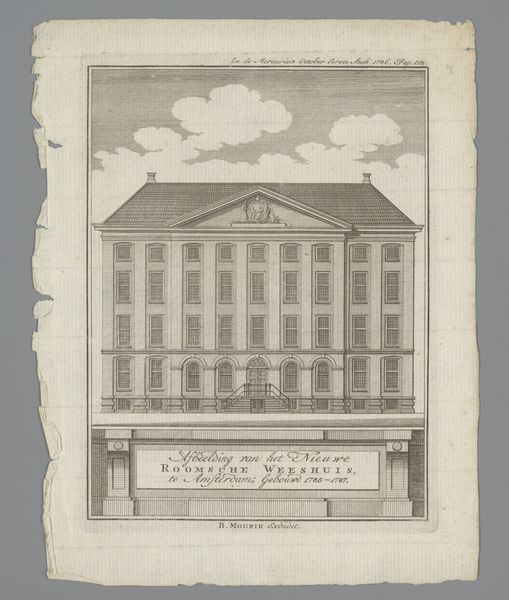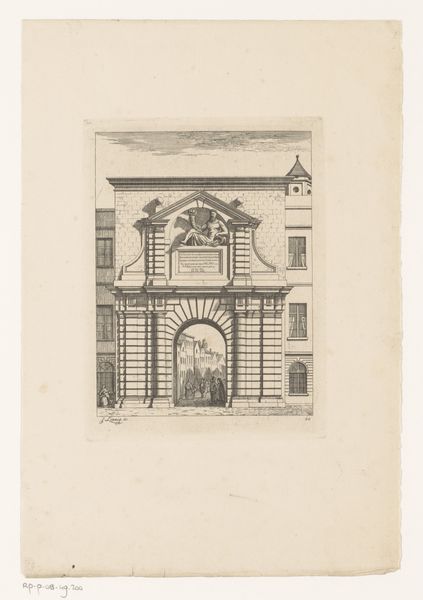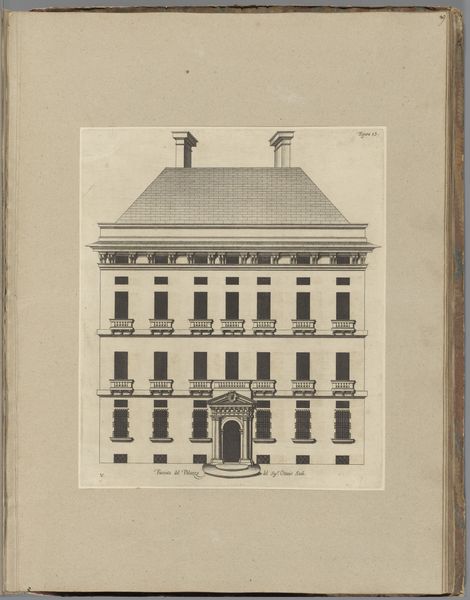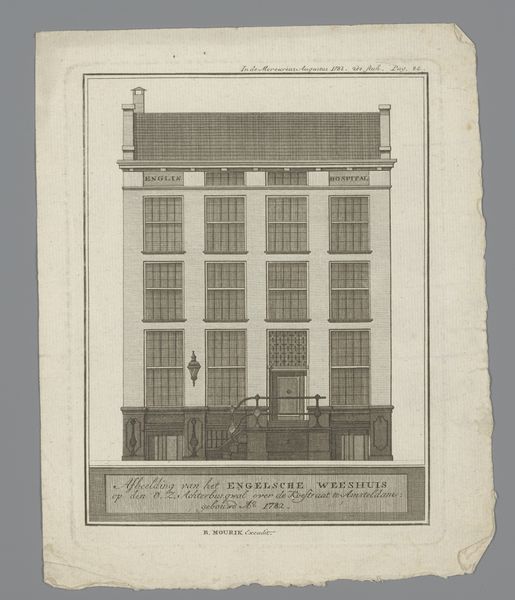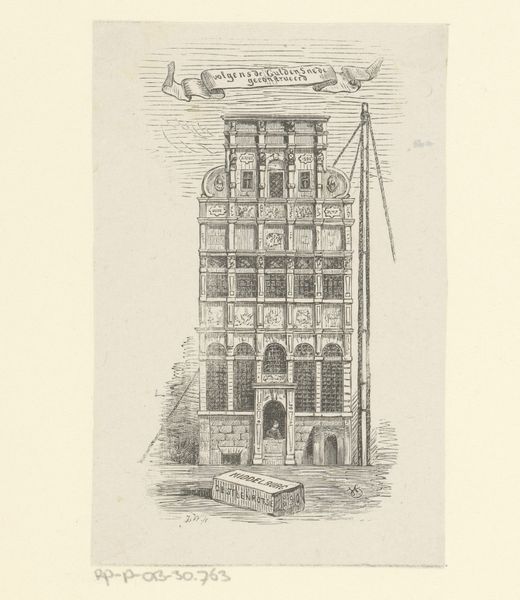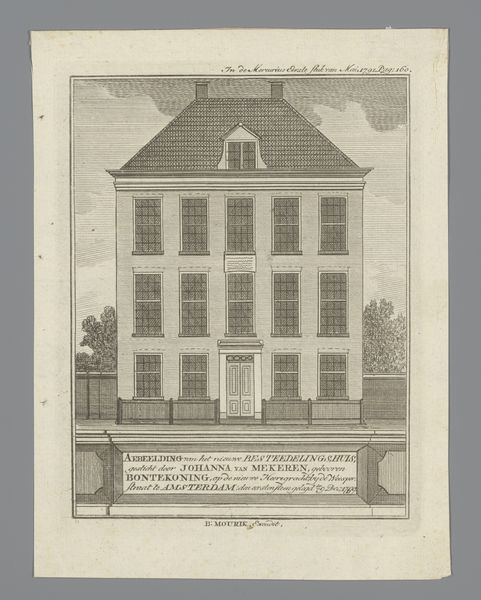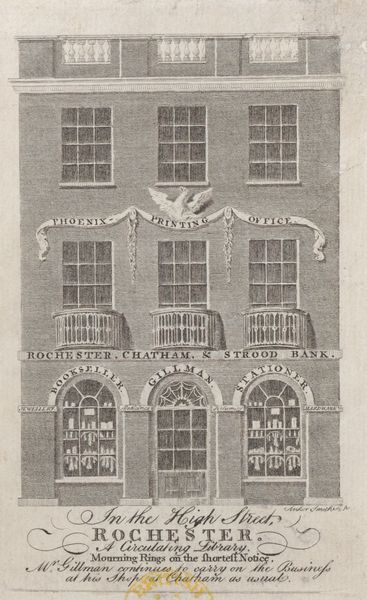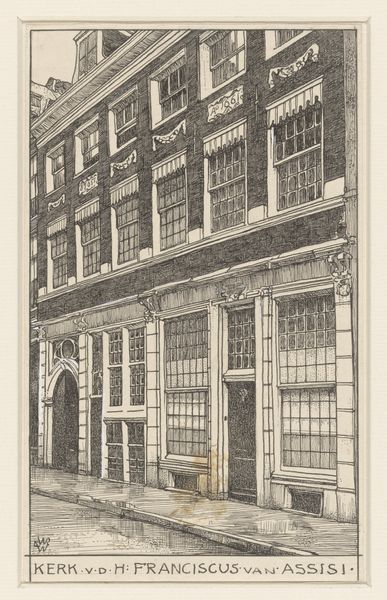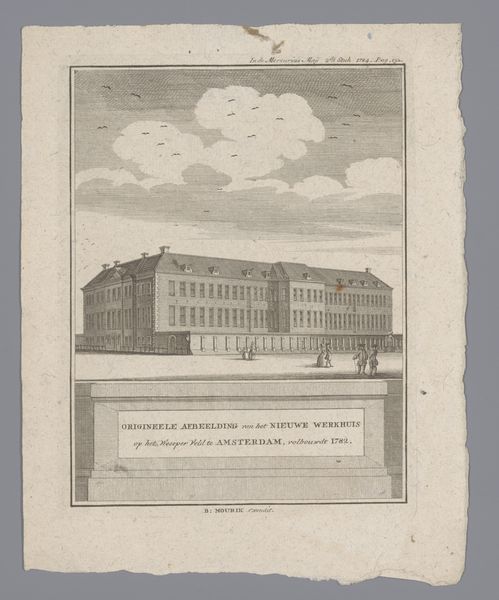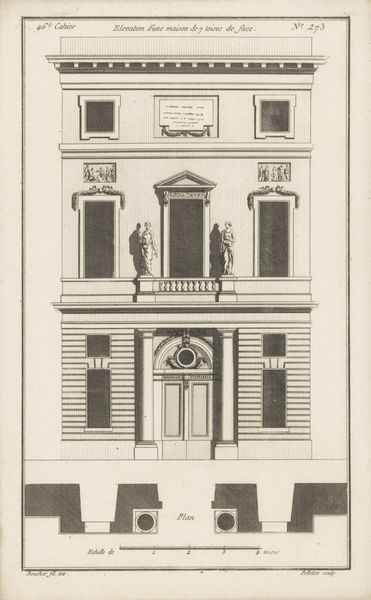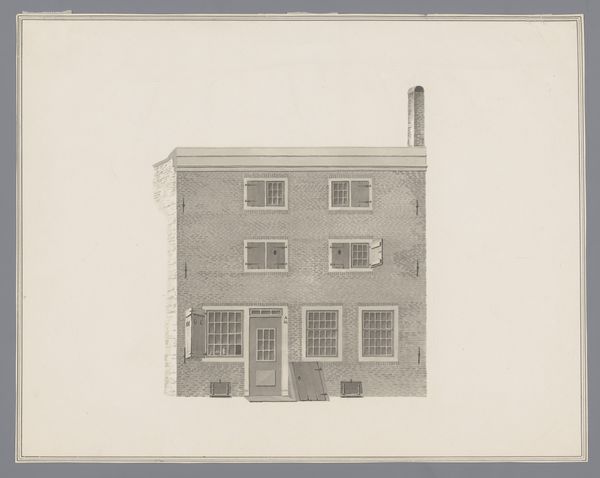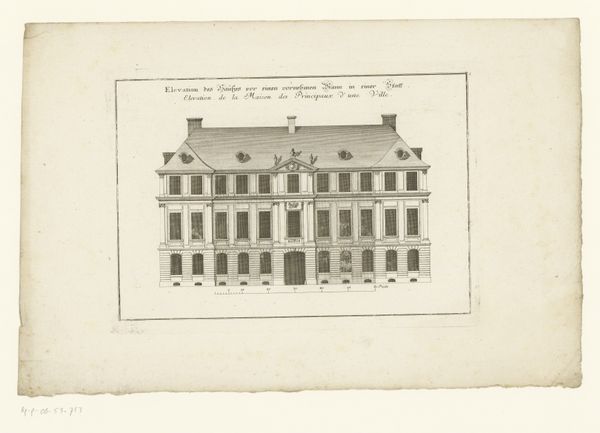
Vooraanzicht van de Kerk van de Evangelische Broeder gemeente te Amsterdam 1799
0:00
0:00
drawing, print, engraving, architecture
#
drawing
#
neoclacissism
# print
#
cityscape
#
engraving
#
architecture
Dimensions: height 165 mm, width 122 mm
Copyright: Rijks Museum: Open Domain
Curator: This is a 1799 engraving by Johan Christoffel Schultsz titled "Vooraanzicht van de Kerk van de Evangelische Broeder gemeente te Amsterdam," or "Front View of the Church of the Evangelical Brethren Congregation in Amsterdam." Editor: My first impression is one of formal austerity. It’s incredibly detailed, almost architectural in its precision, but there's also something cold about it. The repetitive windows feel regimented. Curator: Well, let’s consider this within its historical context. Neoclassicism, which is identified as the style here, often expressed the values of order, reason, and civic virtue, reacting against the more ornate Rococo period. A church rendered in this style reflects a specific desire to connect with those values. The clean lines, symmetry, and unadorned façade can be interpreted as a visual statement against religious extravagance. Editor: I can see that, and the visual language of Neoclassicism, the columns turned into pilasters, the symmetry... it aligns with the Protestant ethic, minimizing ornament. The question becomes: did this aesthetic preference create accessibility, or distance, for the church's intended community? Were they signaling privilege even in their austerity? Curator: Precisely, those questions get to the heart of the issue. Schultsz presents us not just with a building, but with a carefully constructed image intended to convey a particular message of a particular time. And of course, churches throughout Europe adopted neo-classical designs, influenced not just by function, but as tools to express their renewed status and strength in culture and political circles. Editor: Right. The eye is drawn immediately to that triangular pediment topping the structure, an ancient Greek form meant to project stability, knowledge, civilization, a link to tradition. But does such explicit classical referencing reinforce cultural biases or signal the church’s elite position in Amsterdam society? I can’t help thinking of the way powerful institutions so often reinforce their values with imposing architecture. Curator: It makes you think, doesn't it? Analyzing the architecture and the art associated with religious institutions tells us so much about the relationship between power, faith, and the built environment. Editor: Absolutely, the artist uses line and form to reveal what that community wants us to understand about their place in the city, as well as what meanings Amsterdam holds for them, through their spiritual practice. Curator: Examining Schultsz’s rendering alongside other depictions of Amsterdam’s architecture and its religious sites, especially, can help reveal fascinating layers of social and cultural identity formation during this period. Editor: This engraving, a study in symbolism and context, offers such an avenue into understanding not only a building, but a whole belief system embedded within Amsterdam’s urban landscape.
Comments
No comments
Be the first to comment and join the conversation on the ultimate creative platform.
